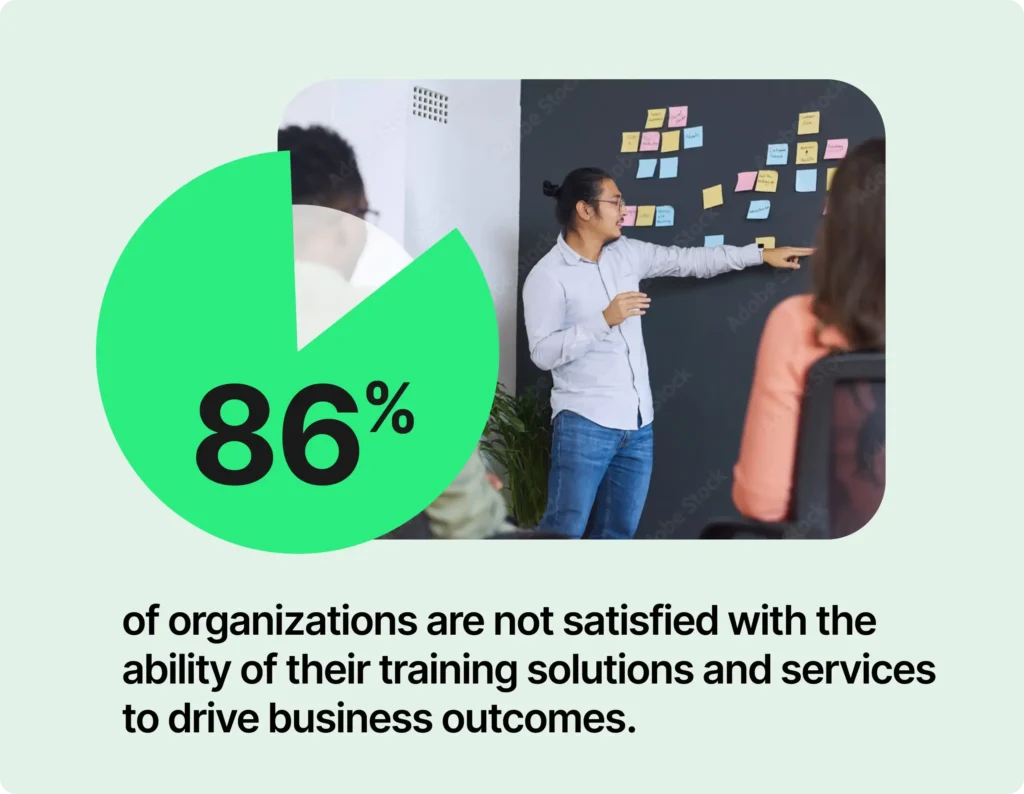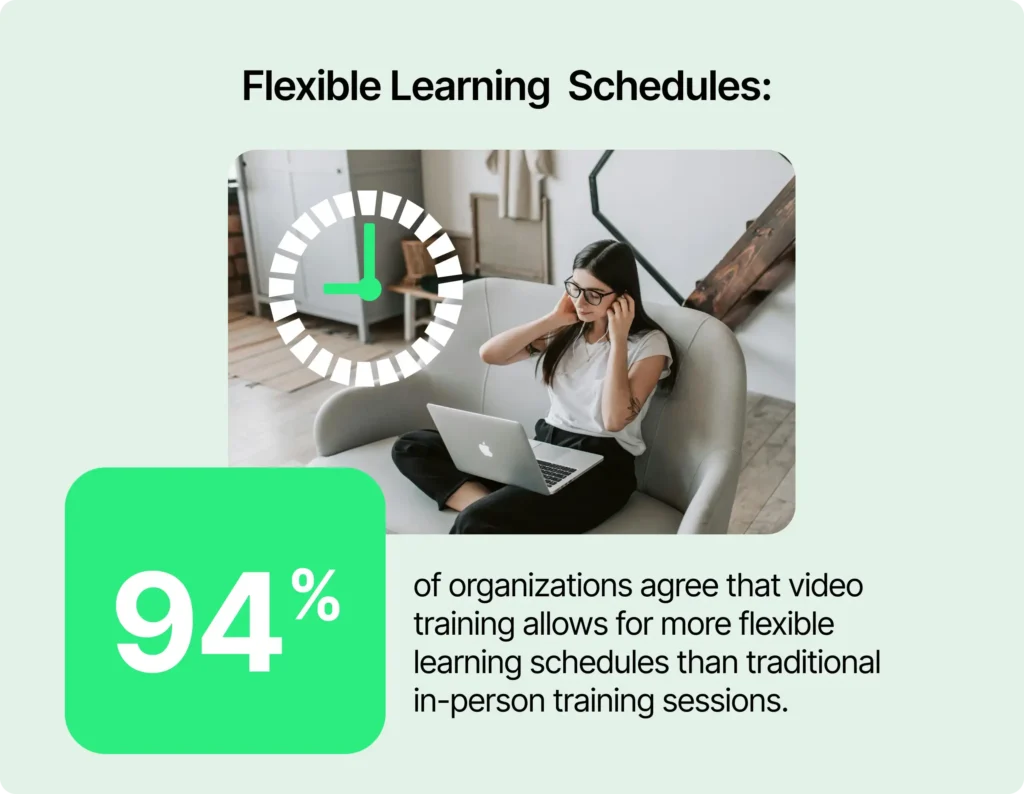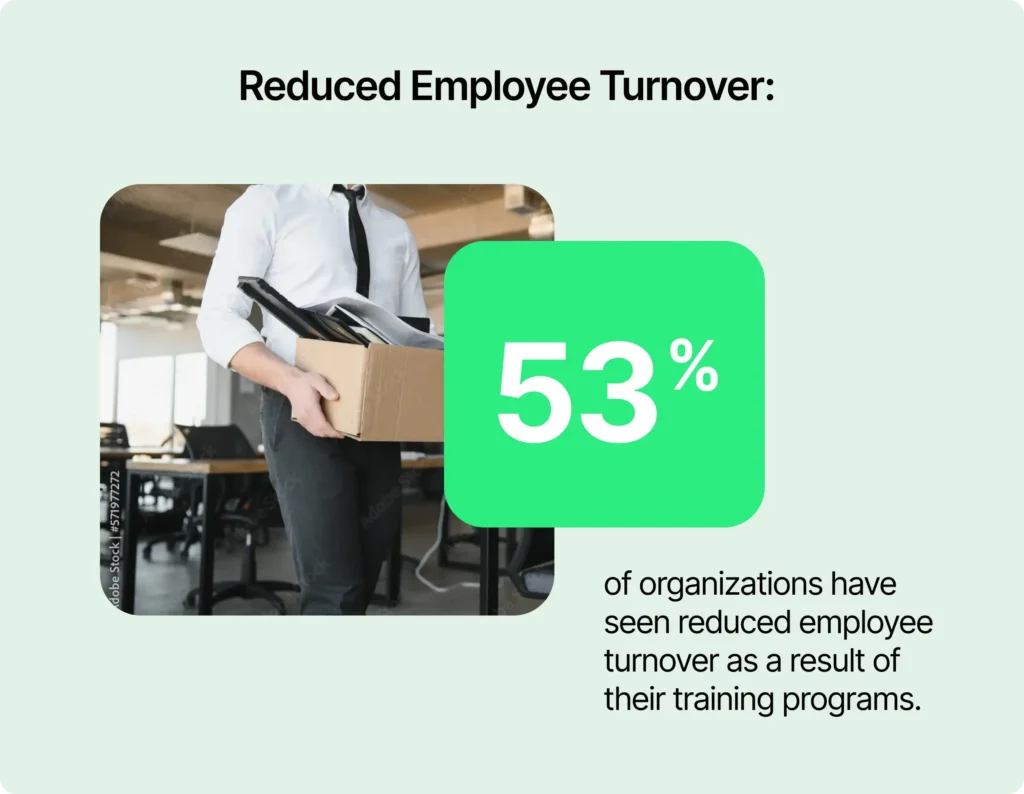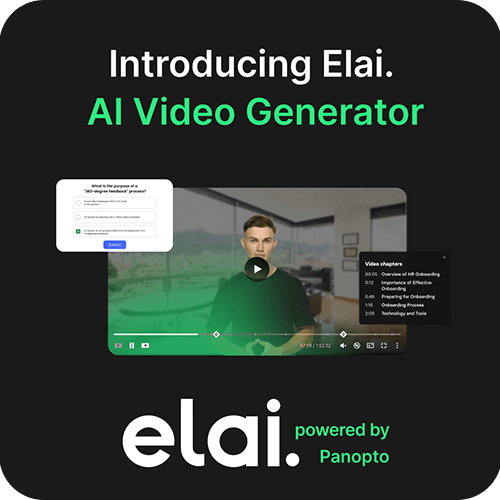Libérez le potentiel de votre organisation : Pourquoi la vidéo doit-elle être la pierre angulaire de votre stratégie de formation ?
- Formation
Libérez le potentiel de votre organisation : Pourquoi la vidéo doit-elle être la pierre angulaire de votre stratégie de formation ?

La formation et le perfectionnement de la main-d'œuvre ont toujours été la pierre angulaire de la réussite des organisations, mais le paysage commercial dynamique d'aujourd'hui introduit de nouvelles complexités. Des méthodes de formation dépassées et des ressources dispersées peuvent entraver les progrès, ce qui rend le transfert efficace des connaissances plus critique que jamais. En tant qu'élément de base de l'apprentissage et du développement, la formation par vidéo continue d'offrir aux organisations un moyen fiable et efficace d'impliquer les employés et de dispenser une formation cohérente et évolutive.
Un rapport récent de Panopto, le leader de la plateforme d'apprentissage vidéo, met en lumière le rôle de la vidéo dans l'apprentissage organisationnel. S'appuyant sur les expériences d'entreprises internationales, les conclusions de l'étude démontrent avec force que la vidéo doit être au cœur de la stratégie d'apprentissage de votre organisation. Voici ce que vous devez savoir :
Les défis de la formation traditionnelle
L'apprentissage est fondamentalement une question de partage des connaissances. Lorsque ces connaissances sont liées aux processus, protocoles et normes propres à une organisation, les employés deviennent la principale source d'expertise. Cela crée une série de défis : Comment ces connaissances peuvent-elles être capturées/enregistrées de manière efficace ? Comment la valider ? Où doit-il être stocké ? Ce ne sont là que quelques-unes des questions cruciales que les organisations telles que l'entreprise d'énergie nucléaire Framatome doivent se poser lorsqu'elles s'attaquent à la tâche complexe de la préservation des connaissances institutionnelles.
Ensuite, malgré des investissements importants dans le développement des employés, 86% des organisations restent insatisfaites de leurs programmes de formation. Pourquoi ?
- Des outils dispersés: Les employés jonglent souvent avec plusieurs plateformes, ce qui rend difficile la recherche rapide d'informations pertinentes.
- Un contenu obsolète: Plus de la moitié des organisations ont du mal à maintenir les supports de formation à jour et attrayants, ce qui entraîne une baisse de la rétention et de la productivité.
- Perte de productivité: Les travailleurs passent jusqu'à six heures par semaine à rechercher des informations, ce qui leur fait perdre un temps précieux.
Les approches traditionnelles ne répondent plus aux besoins des apprenants d'aujourd'hui, mais la formation vidéo offre une solution.

Pourquoi la formation par vidéo fonctionne-t-elle ?
La vidéo est le support idéal pour capturer/enregistrer, systématiser et partager les connaissances institutionnelles. Sa polyvalence s'illustre dans diverses applications, qu'il s'agisse de démontrer des compétences hautement techniques et pratiques - comme l'utilisation en toute sécurité d'un équipement lourd - ou d'enseigner des compétences interpersonnelles nuancées, comme la maîtrise de l'art de la négociation. C'est pourquoi des organisations telles que le fabricant Ingersoll Rand placent la vidéo au centre de ses stratégies d'apprentissage et de développement et de communication.
Et les données parlent d'elles-mêmes : les organisations qui utilisent la vidéo font état de résultats nettement meilleurs dans tous les domaines. Voici pourquoi :
- Alignement sur les préférences d'apprentissage modernes
L'essor du micro-apprentissage - des leçons courtes et ciblées - est parfaitement adapté aux formats vidéo. Les employés préfèrent les contenus de taille réduite, faciles à assimiler, et la vidéo répond exactement à cette attente. - Flexibilité et accessibilité
La vidéo permet l'apprentissage à la demande, permettant aux employés d'accéder à la formation à tout moment et en tout lieu. En fait, 94% des organisations reconnaissent que la vidéo favorise la flexibilité des horaires d'apprentissage, ce qui la rend idéale pour les équipes distribuées et à distance. - Amélioration de l’engagement et de la rétention
Le contenu vidéo est intrinsèquement plus attrayant que les formations textuelles ou en personne. Les employés peuvent revoir les documents si nécessaire, ce qui améliore la rétention et garantit la pérennité des compétences. - Efficacité et économies
La vidéo élimine les obstacles logistiques tels que la programmation et les déplacements, ce qui permet d'économiser du temps et de l'argent. Plus de 77 % des organisations déclarent que les économies réalisées grâce à la vidéo justifient l'investissement initial.

La formation vidéo en action
Les organisations qui tirent parti de la formation par vidéo en retirent des avantages tangibles :
- Performance des employés: La vidéo permet aux travailleurs de trouver rapidement la bonne information, ce qui stimule la productivité.
- Réduction de la rotation du personnel: Les entreprises qui utilisent la vidéo pour la formation font état d'une réduction de 53 % du taux de rotation du personnel.
- Amélioration de l'efficacité opérationnelle: Avec les bons outils en place, les employés passent moins de temps à chercher des informations et plus de temps à contribuer.
De l'intégration et de la conformité au développement du leadership et à la formation technique, la vidéo transforme la manière dont les entreprises préparent leurs équipes à la réussite.
Construire une stratégie de formation centrée sur la vidéo
Pour exploiter pleinement le potentiel de la formation vidéo, les entreprises doivent adopter une approche stratégique :
- Centralisez votre contenu : Veillez à ce que les supports de formation soient stockés dans une bibliothèque facilement consultable.
- Investissez dans un contenu de qualité : Des vidéos attrayantes et actualisées permettent d'obtenir de meilleurs résultats et une plus grande satisfaction.
- Adoptez des outils alimentés par l'IA : Des fonctions avancées telles que la recherche et l'analyse par l'IA rendent la formation encore plus efficace.
- Adoptez une plateforme adaptée à la mobilité: Rencontrez votre personnel là où il se trouve grâce à des options d'apprentissage adaptées à la mobilité.
[Learn More: How to Use an AI Training Video Generator]

L'avenir est à la vidéo
Le personnel moderne exige des solutions dynamiques, flexibles et faciles à utiliser. La formation vidéo ne se contente pas de répondre à ces demandes, elle permet aux organisations de se démarquer dans un environnement de plus en plus concurrentiel. En investissant dans la vidéo, vous pouvez stimuler l'engagement des employés, améliorer la fidélisation et atteindre vos objectifs commerciaux.
Le rapport de Panopto sur la formation de la main-d'œuvre le montre clairement : la vidéo n'est pas seulement un outil, c'est un impératif stratégique. Prêt à voir l'impact qu'il peut avoir sur votre organisation ? Contactez-nous dès aujourd'hui pour découvrir comment la plateforme vidéo de pointe de Panopto peut révolutionner vos programmes de formation.
Dernières nouvelles
-

- Formation
Employee Training Management – Aligning Employees with Corporate Goals
Effective employee training management is the backbone of thriving businesses, transforming scattered training efforts into strategically aligned growth engines. When employees understand exactly how their roles contribute to overarching corporate objectives, magic happens: productivity spikes, engagement soars, and long-term success becomes inevitable. Did you know that organizations that have made a strategic investment in employee…
Employee Training Management – Aligning Employees with Corporate Goals
-

- Ventes
How to Make Sales Presentation Videos With AI
A sales presentation can make or break a deal—yet too many sales teams still rely on outdated slides and monotonous pitches. Video content accounts for over 82% of consumer internet traffic. We live in a digital-first world where video is the key to capturing attention and driving engagement. But creating a polished, persuasive sales video…
How to Make Sales Presentation Videos With AI
-

- Apprentissage actif
Why Every Business Needs an Upskilling Strategy (And How to Build One)
A strong upskilling strategy is no longer optional. It’s essential for keeping pace with rapid technological advancements and shifting market demands. As AI and automation reshape industries, companies must ensure their employees continuously develop new skills to stay competitive. But upskilling alone isn’t enough. Reskilling is equally critical for preparing workers to transition into entirely…
Why Every Business Needs an Upskilling Strategy (And How to Build One)



